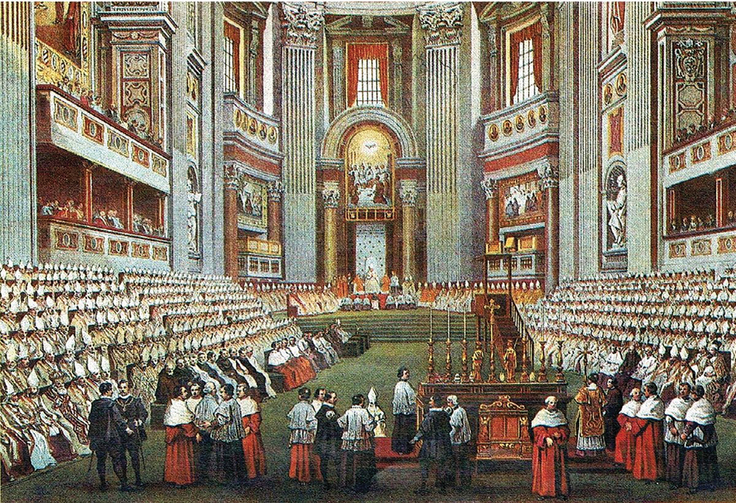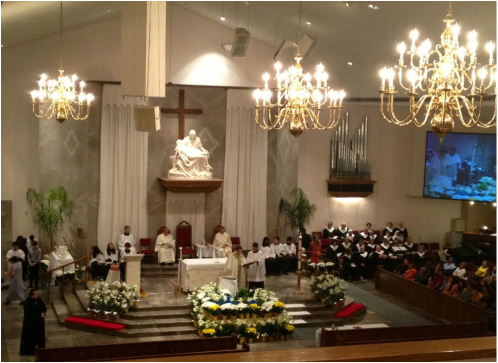Most Catholics (69%) who financially support churches and charitable organizations give 2-5% of their income. The U.S. Catholic charitable giving statistics show that 38% and 35% annually give at least 10% and between 5-9%. For about 5% of Catholics that donate money, less than 2% of their income goes to donations.
Full Answer
What is the annual income of the Catholic Church?
How much money does the Catholic Church give to the poor? The Vatican advertises the funds as going toward helping the poor and suffering, but a new Wall Street Journal investigation found that only 10 per cent of the more than 50 million euros …
What church is most like the Catholic Church?
How much does the church give to charity? Almost 70% of Catholics who donate money give between 2-5% of their income. Most Catholics (69%) who financially support churches and charitable organizations give 2-5% of their income. The U.S. Catholic charitable giving statistics show that 38% and 35% annually give at least 10% and between 5-9%.
What church gives the most to charities?
Even in the private donations part, there might be an estimate, but that is unimportant for my question, because I'm not interested in how much do Catholic persons give privately, but how much does the Church itself give from its own funds.
How much can Catholics disagree with the church?
How much money does the Catholic Church give to the poor? The Vatican advertises the funds as going toward helping the poor and suffering, but a new Wall Street Journal investigation found that only 10 per cent of the more than 50 million euros ($72 million Cdn) given annually goes to those in need. What is the largest foundation in the world?

Which religion gives the most to charity?
These giving levels vary by particular faith. Mormons are the most generous Americans, both by participation level and by size of gifts. Evangelical Christians are next.
How much money does the church give to charity?
62% of religious households give to charity compared to 46% of unaffiliated households (Philanthropy Daily). Church givers between 55 and 65 answer the call to tithe more than any other age group with 32% donating the traditional 10% of their income to the church (Vanco Churchgoer Giving Study).
How much are Catholics supposed to give to the church?
* Catholic: Many Catholic parishes recommend that their parishioners give 5% of their income to their church and 5% to the poor and other charities. * Protestant: Many Protestant churches strongly encourage, but do not require, congregants to tithe.Feb 25, 2006
Is the Catholic Church the largest charity in the world?
The Catholic Church is the largest non-governmental provider of education and medical services in the world.
Why do we give money at church?
In fact, supporting the needs of pastors and the work of the local church is one of the main purposes of tithing. Tithing helps your local church actively be the church by helping others. Giving encourages a grateful and generous spirit and can help steer us away from being greedy or loving money too much.Aug 26, 2021
How does the church make money?
By definition they are non-profit organizations not businesses. They do not generate income by definition and the vast majority generate just enough in tithes and donations to cover program/ministry costs and bills like rent, utilities and maintenance. Many churches close door permanently every year for lack of funds.
How much money does the black church make a year?
On average the black churches raise an estimated $11.5 billion annually which is collected from the community (Candace, 2017). The church is seen as the positive central hub in the black community. It was the pivotal center for many social and political movements in the community.
Where did tithing 10% come from?
tithe, (from Old English teogothian, “tenth”), a custom dating back to Old Testament times and adopted by the Christian church whereby lay people contributed a 10th of their income for religious purposes, often under ecclesiastical or legal obligation.
How much money should I put in the collection plate at church?
In a number of churches I've been in, people usually drop by $1s and $5 bills mostly, some 10s and maybe a couple $20s is what I've seen visible. But mostly ones depending on your church. You put what you are comfortable giving. If you go to church infrequently, then a $10 or $20 is good.
Does Catholic Church pay tithes?
“Payment of tithe, like other donations made in the Catholic Church, is not obligatory. This means that members are not compelled to pay the tithe. It is purely voluntary. Also, Catholics are under no obligation to pay a certain percentage of their income to the church as a tithe.Dec 13, 2017
Does the Catholic Church give money to the poor?
The Vatican advertises the funds as going toward helping the poor and suffering, but a new Wall Street Journal investigation found that only 10 per cent of the more than 50 million euros ($72 million Cdn) given annually goes to those in need.Dec 12, 2019
Who runs the largest charity in the world?
Wealthiest foundations by endowment valueRankOrganisationHeadquarters1Novo Nordisk FoundationCopenhagen2Bill & Melinda Gates FoundationSeattle3Stichting INGKA FoundationLeiden4Wellcome TrustLondon39 more rows
Is food for the poor a Catholic organization?
(FFP) is an ecumenical Christian nonprofit organization based in Coconut Creek, Florida, United States that provides food, medicine, and shelter, among other services, to the poor in Latin America and the Caribbean.
What does the Bible say about giving?
Then your Father, who sees what is done in secret, will reward you” ( Matthew 6 :4), which means that you may be unsure of how much you should be giving in order to be a good Catholic.
Is giving money to worthy causes an act of praise?
Giving money to worthy causes is an act of praise towards God, but it needn’t come at an unmanageable cost to yourself. Other acts of praise involve taking good care of the body He gifted to you and providing for your family. The amount you give is not important, but rather what is in your heart as you give it.
Who is Cassie Steele?
Cassie Steele is a professional writer and editor. After a career in PR for an arts charity, she now focuses on writing about her favorite topics from public art to restoration and events. When not working she loves swimming, hiking and quiet nights in with her family.
What was Pope Francis' main goal?
One of Pope Francis' major aims at the start of his pontificate was to transform the Catholic Church into a “poor church for the poor.". He now faces the painful reality that Peter's Pence, which is supposed to be used to support the poor throughout the world, has been spent instead on buying luxury real-estate in London and financing ...
What is the Holy See?
The Holy See consists of the central administration of the Catholic Church and the global papal diplomatic network. The Vatican itself describes Peter's Pence in glowing terms as "a gesture of charity, a way of supporting the activity of the Pope and the universal Church in favoring especially the poorest and Churches in difficulty.
Who is the new pope of Argentina?
Former Oklahoma Gov. Frank Keating, a Republican, appeared on NBC’s Meet the Press just days after the selection of Cardinal Jorge Mario Bergoglio of Argentina to be the new pope.
Can you deduct donations to charities?
And indirectly, the government maintains a tax exemption for churches and charities, which enables all religious groups to devote more of their funds to charitable work. Taxpayers who itemize can also deduct their donations to charities, including Catholic ones.
What does the Catholic Church celebrate?
In obedience to her historical Founder, the Catholic Church celebrates the Eucharist and forgives sins (through her ordained Churchmen), as prophet preaches the Gospel without letup and, with the hierarchy and the laity, gets involve with the poor and the marginalized.
What is the tenet of the Monastic Rule of Saint Benedict?
The review of the history of medical care begins not with the Monastic Rule of Saint Benedict (AD 480–550) that articulates the tenet: “The care of the sick is to be placed above and before every other duty, as if Christ were being directly served.”
Is the Catholic Church a spiritual institution?
Some consider the Catholic Church as a spiritual institution founded for a spiritual purpose – and only that. And I recall Josef Stalin’s quip to French Prime Minister Pierre Laval in 1935: “The Pope!

Examine Your Own Finances
The Tithe
- Numbers 18:26 states that “When you receive from the Israelites the tithe I give you as your inheritance, you must present a tenth of that tithe as the Lord’s offering”. This has led to a tradition of Catholics donating 10% of their disposable income to their Church. In order to achieve this, set up a savings account dedicated to donations. You can start with just 1 or 2% if times ar…
Other Charitable Causes
- The money you give to Church will be used for many good causes and accounts for a large percentage of social security funding. However, if you have the means you may want to donate to charitable causes yourself. This can be as part of the total 10% or added on top. The amount is less important than the charity you give to. Research the organization beforehand to make sure t…
Other People Are Reading
Popular Posts:
- 1. where to donate clothes oakland
- 2. where can i donate unopened baby formula
- 3. where to donate collectibles near me
- 4. how much did donald trump campaign raise july 4th how can i donate to trump
- 5. where to donate hair products near me
- 6. where to donate cell phones for tax deduction
- 7. where can i donate my stuff
- 8. how much money did michael jackson donate
- 9. how to donate a car and get a tax deduction
- 10. where can i donate blood in my area